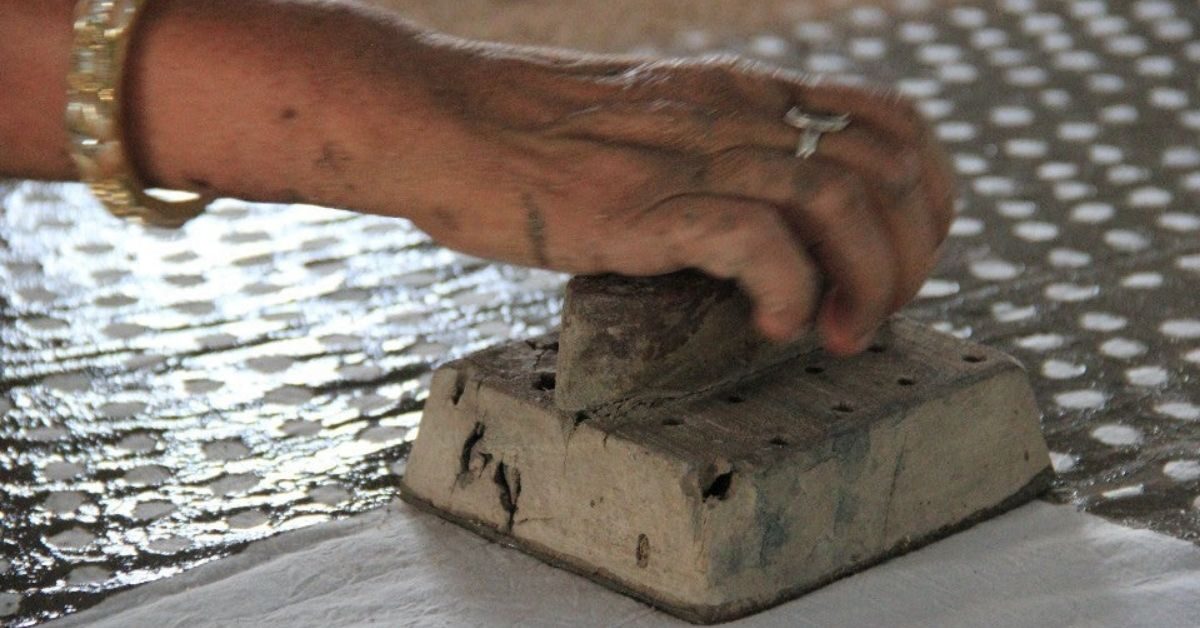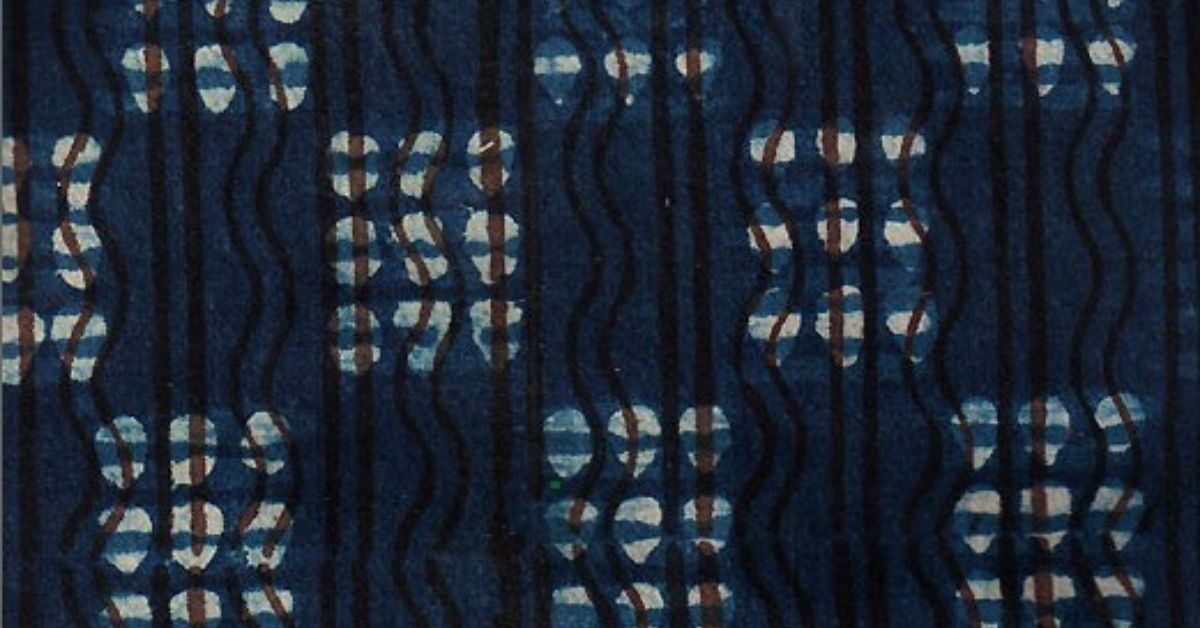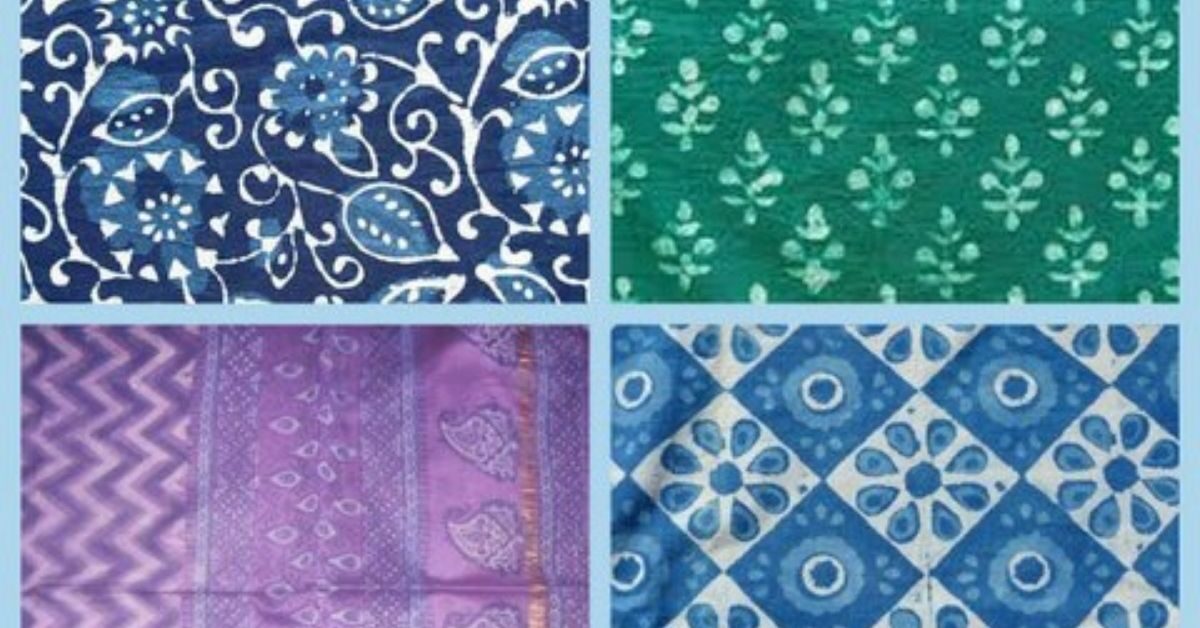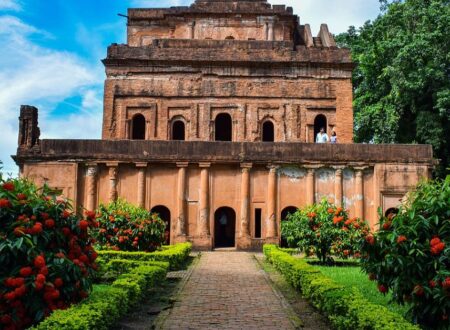Dabu, often known as ‘daboo,’ is a Rajasthani mud resist hand block printing method. Dabu printing is a worker-intensive printing process requiring several printing and dyeing steps. Resulting in a one-of-a-kind mesmerizing product. This unique printing practice was nearly wiped out in the last century. It was restored and is now a thriving industry in many Rajasthan printing villages. Their subtle beauty and design depth set the Dabu printed fabrics apart. It has raised the interest of many contemporary Indian designers.
Motifs and designs

Since the blocks used for printing are common to most printing processes, traditional Dabu designs and motifs are extremely similar to those used in traditional Rajasthani textiles. Nature-inspired designs of plants, birds, flowers, and fruits and beautiful ethnic motifs are common.
Additionally, nature-inspired designs are common, such as peacocks, mangoes, foliage, cornstalks (called boot), sunflowers (Suraj Mukhi), and animal figures. One can also spot geometric shapes, dots, and wavy lines. These resulting motifs are then replicated over and over on the fabric. The mud paste splits and spills from time to time, providing a characteristic vein-like texture similar to Batik prints.
History of Dabu printing

Hand block printing is a centuries-old fabric printing method that originates in China. It eventually made its way to India, where Rajasthan became the main hand-printed fabrics manufacturer. Mud resist printing is a unique variety with roots dating back to around 675 A.D. In Rajasthan’s Chittorgarh region, the Akola village is known as the birthplace of the unique Dabu printing style, which employs mud resists.
At this time, Dabu is considered to have been formed for the first time. When he returned from his journey to the river for water, it is said that he was a man who made a living by dying textiles. He did not notice the filth that had adhered to his dhoti on the river bank. When he hung them to dry, he observed that the indigo had not colored the patches where the muck had stuck to the dhoti.
Dabu printing represents other Rajasthan culture hand block prints such as Sanganeri and Bagru, although it has a distinct style and method.
The Printing Process

Dabu printing is a worker-intensive procedure that involves numerous people and multiple phases of printing, washing, and dyeing. The mill’s plain cloth is carefully cleaned to remove any dirt that could interfere with the coloring process.
The designs are then hand-printed into the fabric with care and precision using blocks dipped in fast dyes. Mud resists, which gives this print its distinct look, is the next and most important step. Mud, gum, lime, and discarded wheat chaff are mixed to form the ‘dhabu’ or mud resist paste, which is then patted over specific pattern areas. Sawdust is sprinkled over the paste to dry it. This layer effectively protects these areas of the cloth from the dye that will be applied later, resulting in a unique and colorful look.
Following the printing process, the fabric is laid out in the sun to dry entirely. It is then dipped into a dye vat, dried, and washed thoroughly to remove the paste and any extra dye. Natural vegetable dyes and pastes are commonly employed. As a result, the fabric’s unprotected areas absorb the color, while the dhabu-covered areas remain plain. To give each design element a different shade, the cloth can be dyed multiple times in different colors.
Dabu is now used in a wide range of Indian and Indo-western clothing and home décor goods. Linens, bedsheets, bed coverings, pillows, and drapes are all decorated with Dabu printing. Dabu printing is also used to make everything from sarees and salwar kameez to shirts and kurtas in India. Scarves, stoles, and shawls with Dabu motifs and accessories like totes and jhola bags are trendy.
Follow India Chalk on Instagram for more amazing travel content. You can share your travel story with us. Reach out to us on email at contact[at]ndiachalk[dot]com. This blog is curated by India Chalk and written by Aryaki Mishra.







2 Comments